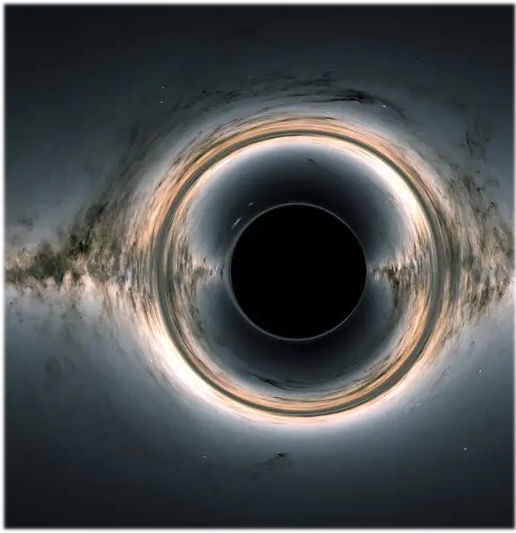Black Holes
A topic which often comes up in Wonderdome question time is – black holes.
It’s no surprise.
Black holes are among the most mysterious and interesting objects in the Universe.
They have a scary reputation.
And they push Physics to its very limits.
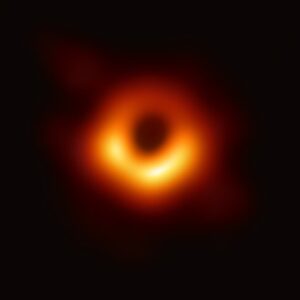
Black Hole: Event Horizon Telescope, EHT.
In this blog we’ll see how a black hole is made and what’s inside it.
We’ll see if black holes deserve that scary status.
What is a Black Hole?
Short answer
A black hole is what’s left after a huge superstar dies.
A supergiant star dies in a huge explosion called a supernova.
Supernovae are the most violent events in the Universe.
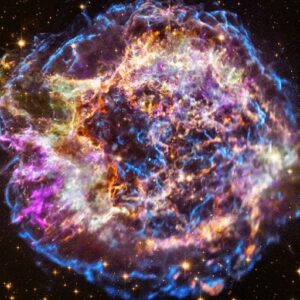
Cassiopeia A supernova remnant. Credit: NASA/CXC/SAO; NASA/CXC/E.Jiang
After the explosion, most of the big star is blasted into space.
But the core, the middle, remains.
It is completely crushed by its own gravity, squashed into a tiny dot.
That dot has powerful gravity. Nothing can escape it, not even light.

Black Hole simulation. Credit: NASA
A ball of darkness forms around the dot.
That dark ball is a black hole.
That’s the simple answer.
Now let’s look in more detail.
Before we see how black holes are made, we must understand how stars work.
The beginning
The fuel for stars is hydrogen gas.
Hydrogen gas makes up most of the universe.
It also makes up stars.
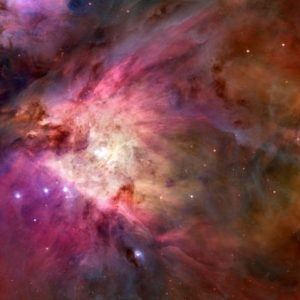
Orion nebula, acloud of hydrogen gas. NASA / HST
In the core of every star, hydrogen is converted into helium.
This nuclear fusion gives out enormous amounts of energy, making stars shine.
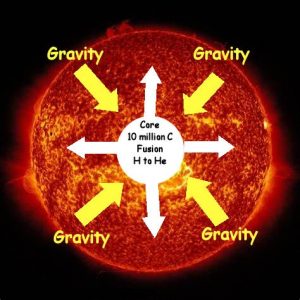
Radiation / gravity balance in a star
The outflow of energy is balanced by the star’s own gravity.
So radiation pushes out and gravity squeezes in.
The star then lives in a happy balance for billions of years.
The end – ordinary stars
Stars die because they run out of nuclear fuel. They literally run out of gas.
As stars reach the end of their lives, they create and burn different fuels.
Heavier elements are made in the core.
In stars like the Sun, helium becomes carbon, then nitrogen, then oxygen.

Red giant interior
These new reactions force the star outwards against gravity.
The star swells up to become a red giant.
When all the reactions stop, gravity shrinks the core to make a white dwarf, a dead star.
Most stars do not make black holes.

White dwarf, a dead star
The end – Supergiant stars
Black holes are made by huge, high mass superstars.
When these stars die, they swell up into red supergiants.
They are hundreds of times bigger than our Sun.

Red Supergiant. Credit: ESO
Inside the supergiant, the core produces heavier elements like neon, magnesium and silicon.
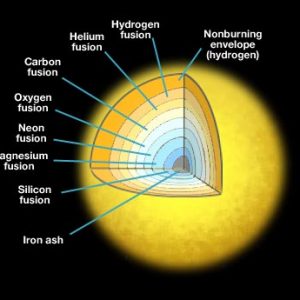
Supergiant interior
The final heavy element made is iron.
The iron isn’t hot enough to fuse, so the nuclear reactions come to a stop.
When the reactions stop, no more energy is released from the core.
The star collapses under its own gravity. Its core is crushed into a tiny space.
The outer layers bounce off and the star explodes, a supernova.
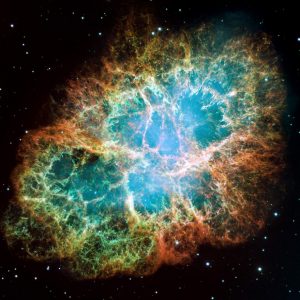
Crab Nebula, supernova explosion. NASA / HST
The remains
The star’s core is crushed by gravity.
Atomic particles are forced into each other and into a tiny space, smaller than this full stop.
It’s called a singularity. This strange object has enormous mass but no volume.
Although it is infinitely small, that singularity weighs five times more than our Sun.
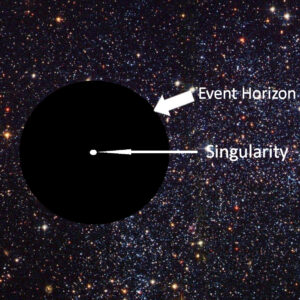
Nothing can travel fast enough to escape from the gravity of the singularity.
Not even light can escape – and light is the fastest thing in the universe.
The result is an area of darkness around the singularity.
That is a black hole.
Event Horizon
The edge of the zone of darkness is called the Event Horizon.
It is the point of no return.
Anything falling in beyond the Event Horizon will be pulled inside.

It will then be crushed to become part of the singularity.
Anything that falls into a black hole will never come out.
A black hole may be around 30 kilometres across.
That’s very small compared to stars and planets.
Black Holes and Gravity
So far, black holes seem to have lived up to their scary reputation.
But their gravity pull is limited.
For example, let’s see what would happen if the Sun became a black hole.
It can’t, it’s not big enough but let’s pretend.

The sun as a black hole would be about 5 kilometres across.
It’s gravitational pull would be the same as the Sun because it weighs the same.
There would be no effect on the planets.
Earth and the rest would continue in their age old orbits around their star.
OK, it would be all in the dark but we’re only pretending!
So black holes do not pull in stuff from far away.
You have to go close to a black hole to be pulled inside.
The nearest black hole
The closest black hole to us is Gaia BH1.
It is 1,500 light years away in the constellation Ophiucus.

Star orbiting black hole Gaia BH1. Credit: PanSTAARS
We can’t see the black hole itself.
We know it’s there because there is a star in orbit around it.
The star is moving round something invisible.
That invisible object is a black hole.
The star is like our Sun and orbits the black hole every 186 days.
The black hole is around ten times the mass of the Sun.
It is only 50km wide.

Gaia BH1 and orbiting star, artist impression.
Credit: International Gemini Observatory/NOIRLab/NSF/AURA/
J. da Silva/Spaceengine/M. Zamani
Our artist drawing shows the star and the black hole.
That would be some place for a planet!
We’ll talk more about finding black holes in our next blog.
The next Black Hole
To predict what star will make the next black hole we need a nearby red supergiant.
There’s a great candidate in the constellation Orion.
At the top left corner of Orion lies Betelgeuse.
It’s about 600 light years away.
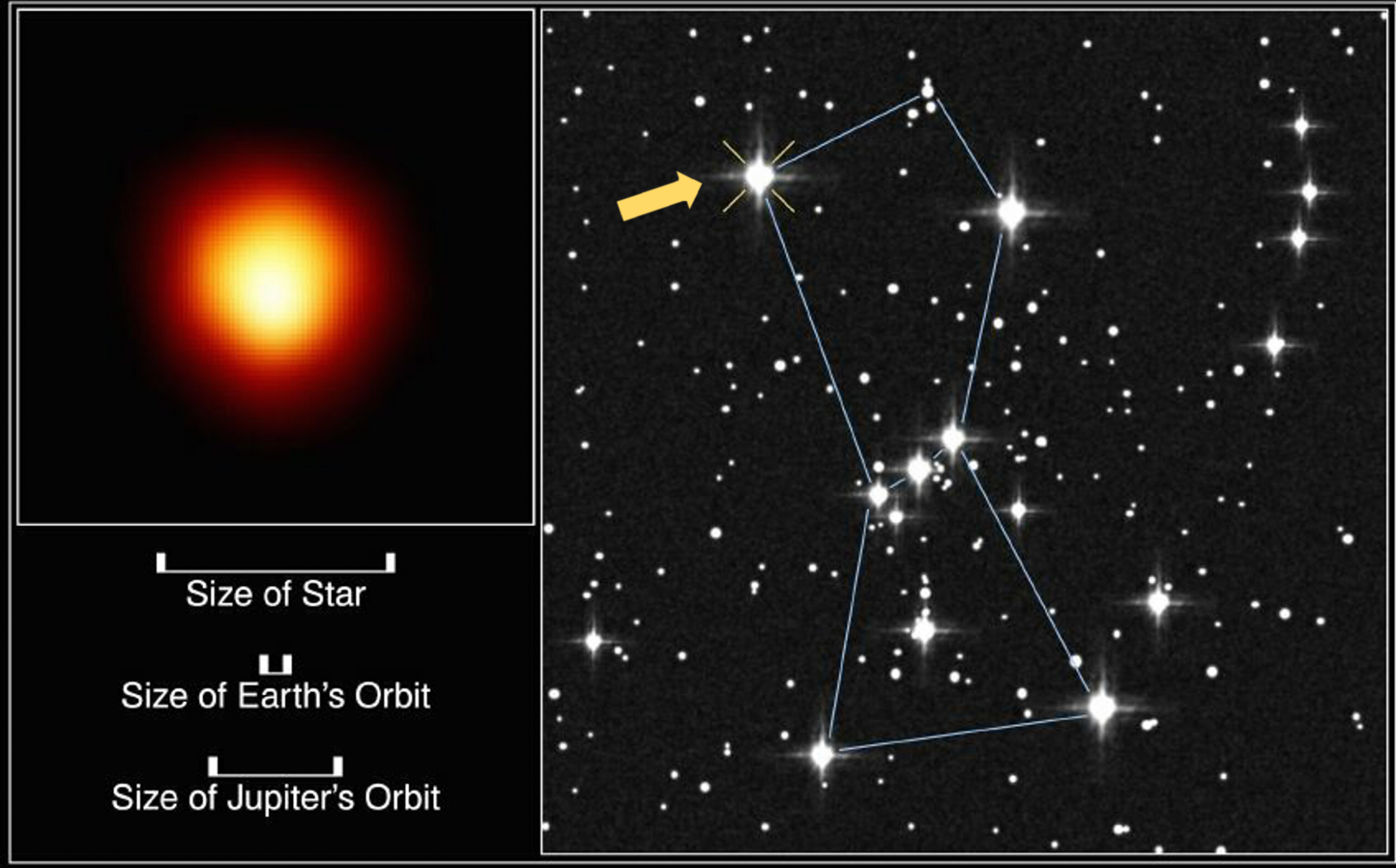
Orion and Betelgeuse. Credit: Andrea Dupree (Harvard-Smithsonian CfA),
Ronald Gilliland (STScI), NASA and ESA
Betelgeuse is 700 times wider than the Sun.
If it replaced our Sun, it would swallow up the first four planets.
Mercury, Venus, Earth and Mars would be inside the star!
Betelgeuse is using up its fuel fast.
Sometime it will explode as a supernova.

Cassiopeia A supernova remnant. Credit: NASA/CXC/SAO; NASA/CXC/E.Jiang
Its core will collapse to become a black hole.
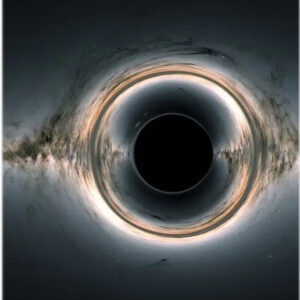
So when will it explode?
It could be this year. Or next year. It will definitely explode in the next 100,000 years!
Keep watching Betelgeuse!
Coming Next – Supermassive black Holes
We’ve looked at black holes that are made by single stars.
But there are monster black holes in almost all galaxies.
In our next blog we’ll find out about supermassive black holes.
We’ll also answer two other questions.
How do we find black holes in a black sky?
And what would happen if you fell into a black hole?
Find out in our next blog!
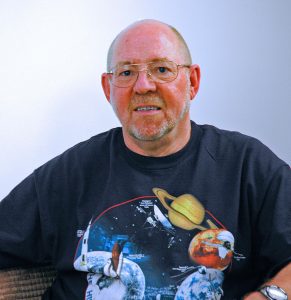
The author: Dennis Ashton, MBE, is a Fellow of the Royal Astronomical Society and a Wonderdome presenter.
In 2024, Dennis received the Special Contribution award from the British Association of Planetaria.
In 2025 he became a Member of the Order of the British Empire for over 50 years work in Astronomy Education.
Wonderdome now has 15 presenters, making us the largest – and best – mobile planetarium organisation in the UK.
Would you like more Astronomy news?
Do you want to hear about our upcoming public events?
Follow Wonderdome Portable Planetarium on Twitter / X and Facebook.
Or you can go at our website wonderdome.co.uk.

